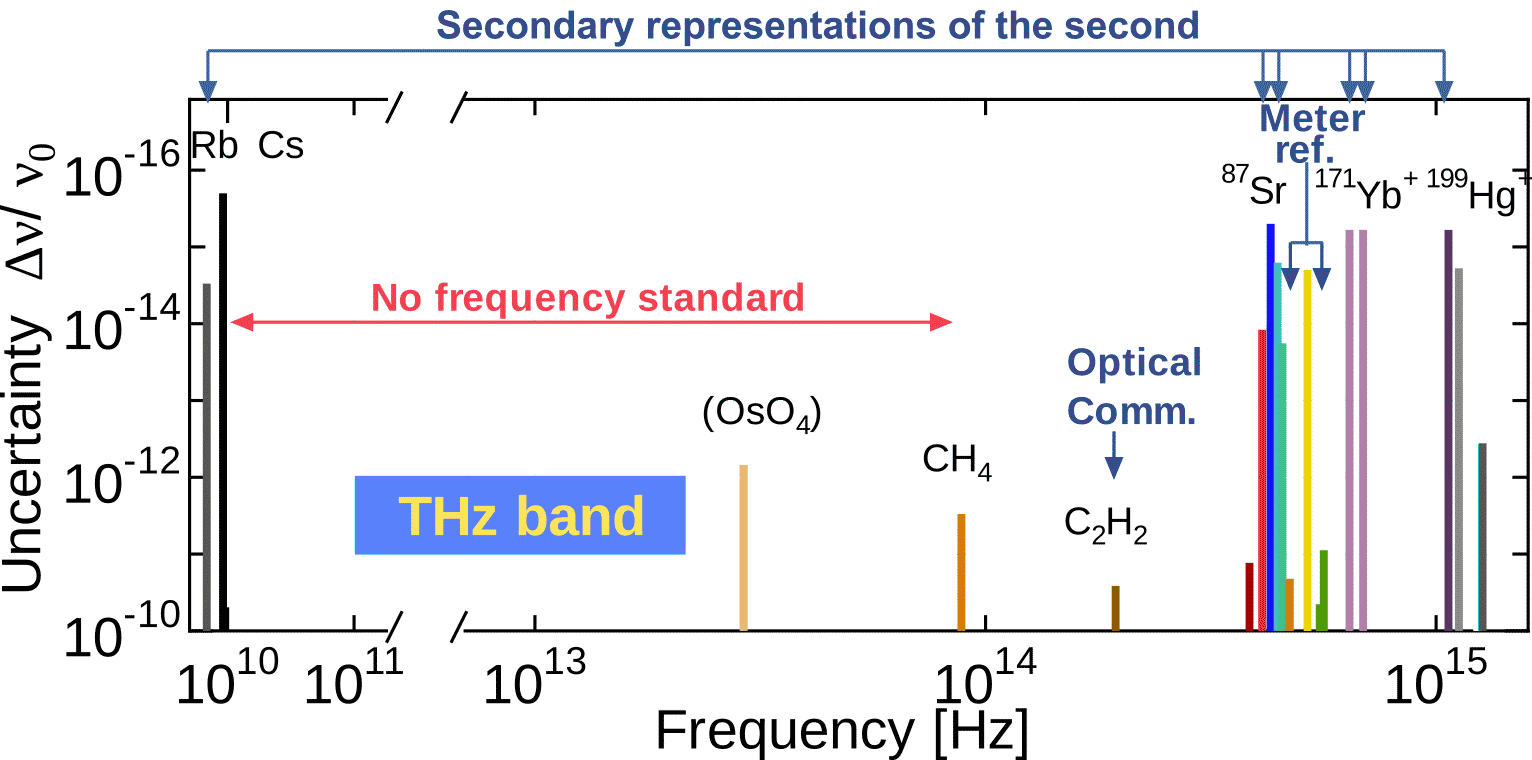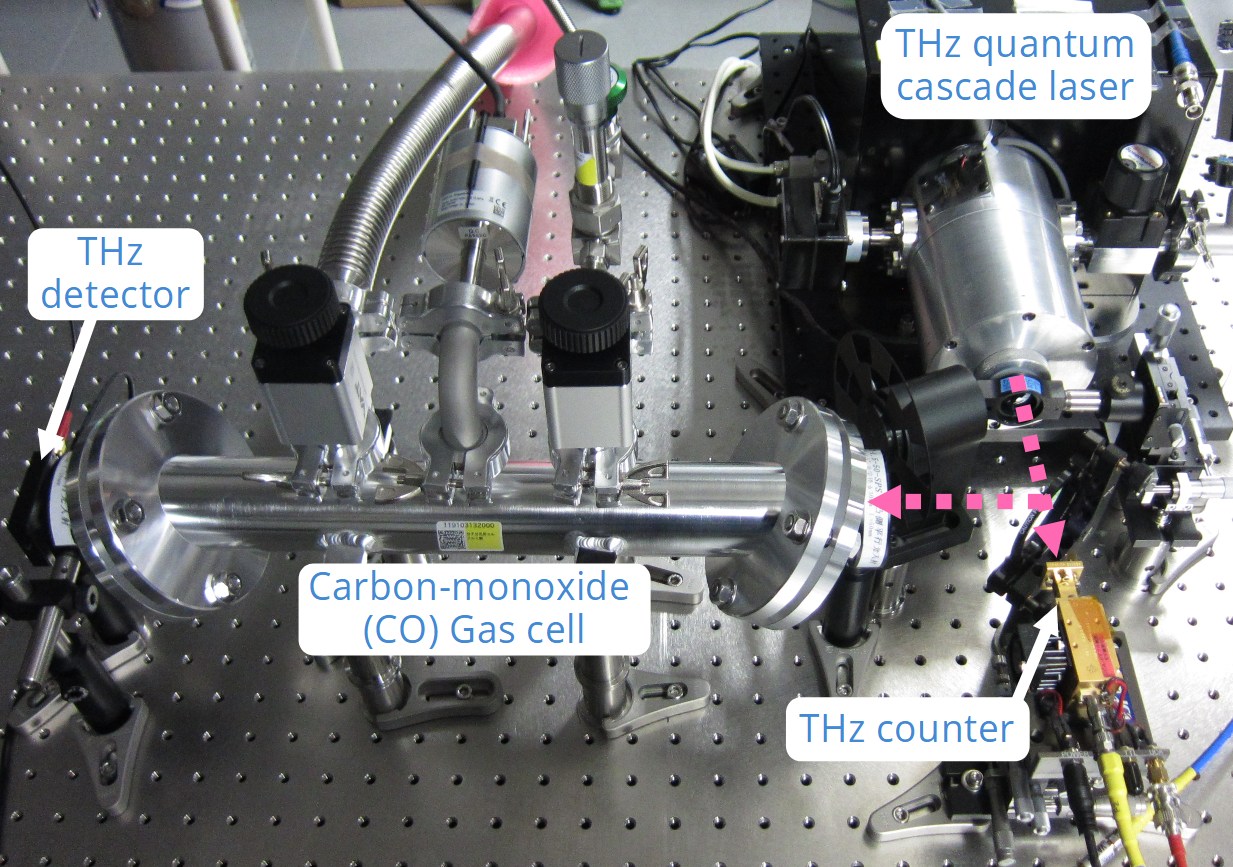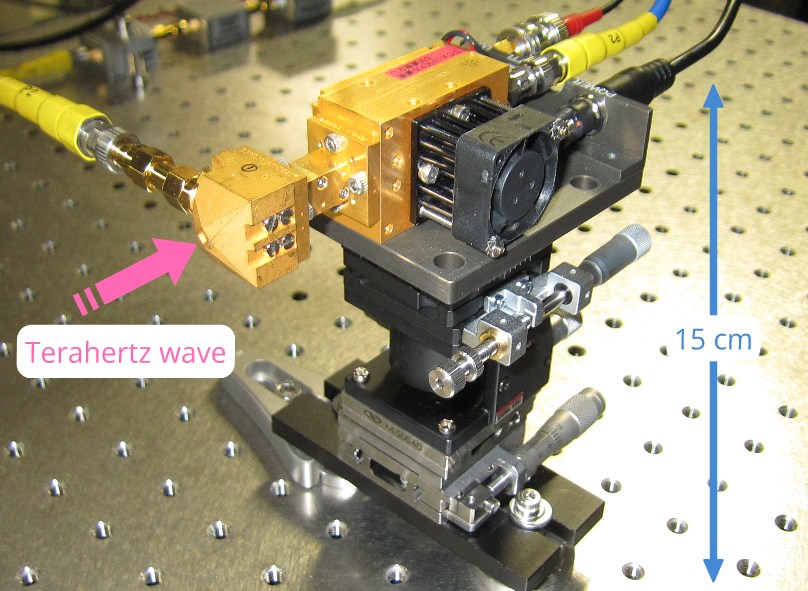Terahertz Frequency Standard
The terahertz frequency band, which spans the range approximately from 0.1 THz to 10 THz between microwaves and infrared light, has often been referred to as the undeveloped frequency domain. Thanks to innovations in both nanotechnology and quantum technology, this situation is changing today, and the terahertz band is now attracting attention as a valuable frequency resource for the next-generation information and communication infrastructure, including Beyond 5G and 6G telecommunication standards.

A frequency standard is indispensable for accurate allocation of the terahertz spectrum, and to ensure the proper function and management of devices that use this band similar to the way our smartphones and other devices now use microwave and millimeter-wave radio resources. Since no standard currently exists in the frequency range of 0.1 THz to 10 THz, NICT's Space-Time Standards laboratory aims to be the first to establish such a terahertz frequency standard and related technologies.
Our terahertz frequency standard is a quantum cascade laser (QCL) oscillating at 3.1 THz, which is stabilized to the absorption spectrum of the carbon-monoxide molecule. Although numerous absorption spectra of various molecules lie in the terahertz band known as the molecular fingerprint region, carbon-monoxide is particularly suitable as a stable frequency reference due to its insensitivity to the external electromagnetic field.

The frequency-stabilized QCL now in development will serve as an unprecedented terahertz frequency standard. As a subsequent future project, we are also theoretically investigating an accurate terahertz molecular clock based on ultra-cold molecules. Such a molecular clock is important not only as a future contributor to the Coordinated Universal Time UTC, but also for verification of the Standard Model by detecting temporal changes in fundamental physical constants.

To support such measurements, we have developed a broadband and high-precision terahertz counter based on a terahertz frequency comb generated in a semiconductor-superlattice harmonic mixer. Where previously reported systems required a complex ultrashort pulse laser or a bulky cryogenic apparatus, our counter is simple, easy to use, and operates at room temperature. This makes it an appropriate instrument for the extension of NICT’s calibration service from microwave to terahertz frequencies, to meet the needs of communication industries in the Beyond 5G / 6G era.
External link
Recommended values of standard frequencies
The list of radiations for use in realizing the definition of the metre and for use as secondary representations of the second, published by BIPM.
Publications
1)
S. Nagano, M. Kumagai, H. Ito, Y. Hanado and T. Ido,
Terahertz frequency counter based on a semiconductor-superlattice harmonic mixer with four-octave measurable bandwidth and 16-digit precision,
Metrologia, 58, 055001 (2021)
(2021)
2)
S. Nagano, M. Kumagai, H. Ito, M. Kajita and Y. Hanado,
Phase-coherent transfer and retrieval of terahertz frequency standard over 20 km optical fiber with 4 x 10⁻¹⁸ accuracy,
Appl. Phys. Express, 10, 012502 (2017)
(2017)
3)
S. Nagano, H. Ito, M. Kumagai, M. Kajita and Y. Hanado,
Microwave synthesis from a continuous-wave terahertz oscillator using a photocarrier terahertz frequency comb,
Opt. Lett. 38, 2137 (2013)
(2013)
4)
H. Ito, S. Nagano, M. Kumagai, M. Kajita and Y. Hando,
Terahertz Frequency Counter with a Fractional Frequency Uncertainty at the 10⁻¹⁷ Level,
Appl. Phys. Express 6, 102202 (2013)
(2013)
5)
M. Kajita, G. Gopakumar, M. Abe and M. Hada,
Elimination of the Stark shift from the vibrational transition frequency of optically trapped ¹⁷⁴Yb⁶Li molecules,
Phys. Rev. A 84, 022507 (2011)
(2011)

